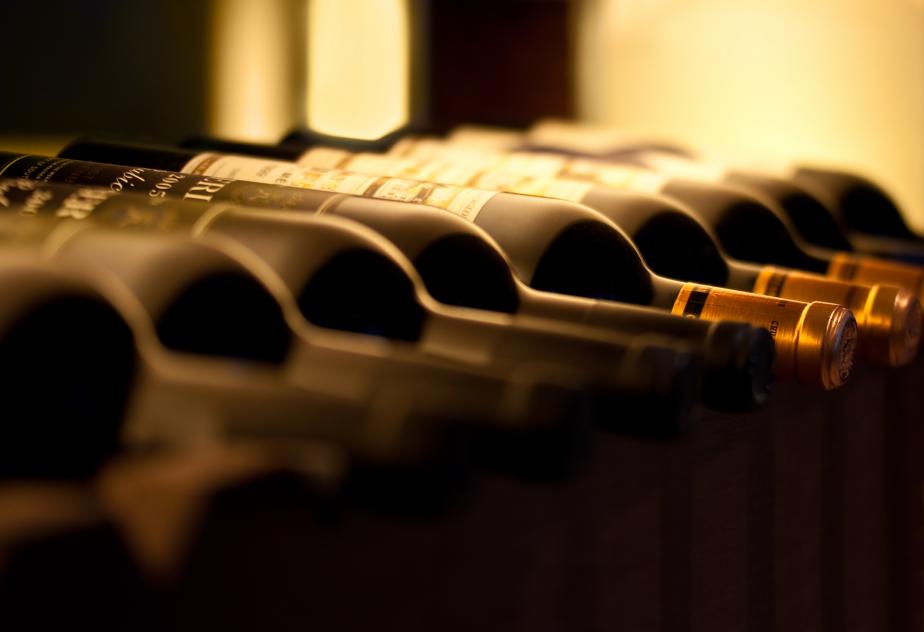
Have you accumulated several bottles of wine over the festive period? Perhaps you partook in ‘Dry January’ and haven’t touched your wine stash in a while? Maybe you had a clear-out and found some dusty bottles you forgot you had? Whatever your reason, if you drink wine, you’ve probably asked yourself at least once, does wine go out of date and can I still drink this bottle?
Naturally, an opened bottle of wine will turn a lot quicker than an unopened one. Typically speaking, opened wine of any type should be consumed within two to six days and kept in the fridge with a cork-stopper during that time. That being said, most of the confusion surrounding the discussion on ‘does wine go bad?’ surrounds unopened wine, in which case there are a lot of variables.
In short, yes, unopened wine can go bad, but not all of it. There are some wines that are designed to last for decades, whilst others are intended to be enjoyed within a year or less. As the age-old expression notes, fine wines can and do get better with age, but the majority of off-the-shelf wines available in supermarkets and corner shops don’t fit into that category. This doesn’t mean that inexpensive wines are bad, it just means that they reach their flavour peak shortly after being bottled and so should be consumed within a year or two at the absolute maximum, though this will depend on the type of wine you have.
Does White Wine Go Off?
As mentioned, wine can go bad, and white wine is no exception. Generally speaking, red wine lasts longer than white wine because red wine has more tannins in it. Tannins are found in grape skins and seeds, and their presence can prevent wine from oxidising and spoiling. White wine – unlike its red counterpart – is made without grape skins or seeds, and this means it has a lower tannin level which, in turn, means it spoils faster when opened.
In terms of unopened white wine, it’s not usually the type that ages well. Aged champagne is a delight, but most white wine isn’t designed to be aged or left unopened for years at a time, making it highly susceptible to going off if it’s forgotten about.
Does Red Wine Go Bad?
Red wine can and frequently does go bad, although depending on the type and the quality, it’s more suited to ageing in the bottle than white wine so, on occasion, it can actually taste better 10 years down the line rather than 10 minutes after purchasing. That being said, most off-the-shelf red wine will not last beyond a year or two.
If you’re unsure how to check if your wine has gone off (red or white), there will usually be an expiration date printed on the bottle. If your wine doesn’t have an expiration date, check the sealed date as this will give you a good indication of how old the wine is.
Signs Your Wine Has Gone Off
There are other ways to check if your wine has gone off other than the expiration date. Noticeable signs to check for include:
- Cork – corked wine is a wine that has been spoilt by a faulty cork. In many cases, if the wine has been improperly stored or stored for too long when it’s not designed to be an aged wine, the wine will overheat and expand, pushing the cork out slightly and resulting in spoilt wine. If you notice the cork on your wine is slightly out, treat it like wine that has been opened and discard it.
- Smell – in the same way that perishable food develops a musty and/or mouldy smell, so does bad wine. If you open your wine and notice a vinegary or damp smell, it’s a good sign the wine is off and should not be consumed.
- Fizzy – sparkling wine is most enjoyable, but only if it’s been designed that way. If you have a bottle of wine that was not sparkling when you bought it but now you’ve opened it appears to be batting for the other side, it’s likely undergone a second fermentation process in the bottle. In this instance, it’s too far gone and is beyond saving.
- Taste – we’ve all consumed alcohol that resembles paint stripper or nail polish remover, but it is usually a taste associated with high percentage spirits, not wine. A bottle of wine that tastes like chemicals is not a bottle of wine to be enjoyed.
- Colour – red wine that looks brown and white wine that looks straw yellow is off and should be discarded.
Wine Storage
Whilst the majority of wines are designed to be consumed within a year or two, the way you store your wine can have a big bearing on if it can be preserved for a bit longer. The first step is the wine rack. All our wine racks require the bottle of wine to be stored on its side, and for good reason. A wine that is stored on its side will rest against the cork. This will prevent the cork from drying out and shrinking, thus letting in oxygen and destroying the wine inside.
The next thing to consider is where you will be placing your wine rack. Any wine drinker knows a cool, dry place is essential, and that’s why cellars are so often used. If you don’t have a cellar, any room with no direct sunlight and a constant temperature between 10-15 °C is ideal. A relatively high level of humidity is also required, with anywhere up to 75% proving optimal.
Proper storage can extend the life of your wine, but as mentioned, it will depend on the type of wine you have. Even if you have the most equipped wine storage solution, an inexpensive bottle will not taste any better if left because it simply is not designed that way. This is important to note.
Get in Touch
If you have any questions about how long wine lasts, or how to create effective storage to properly age a wine that is designed to get more mellow as time goes by, please contact our team
 Designed and Manufactured in the UK
Designed and Manufactured in the UK 